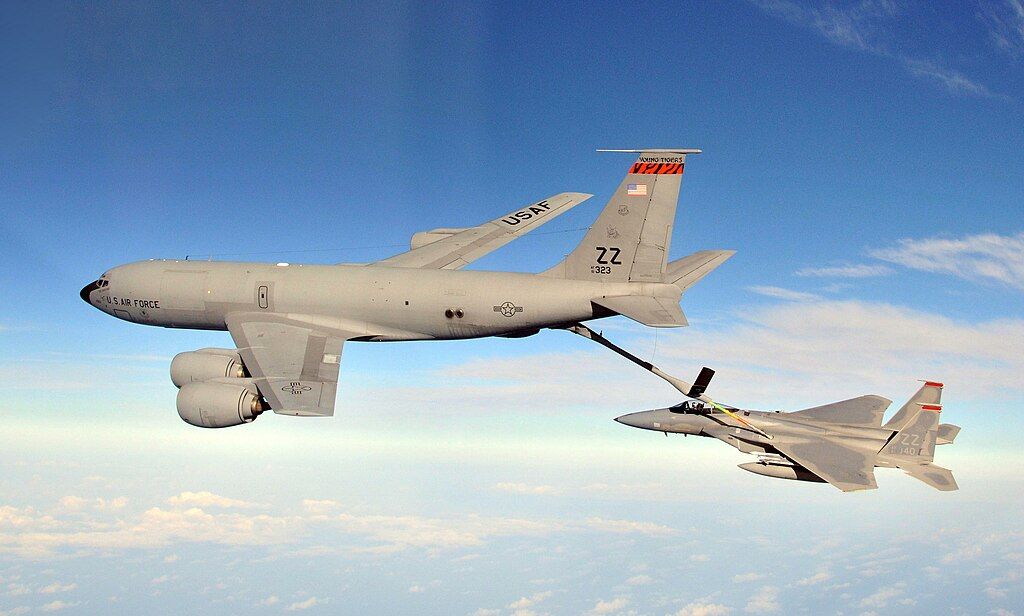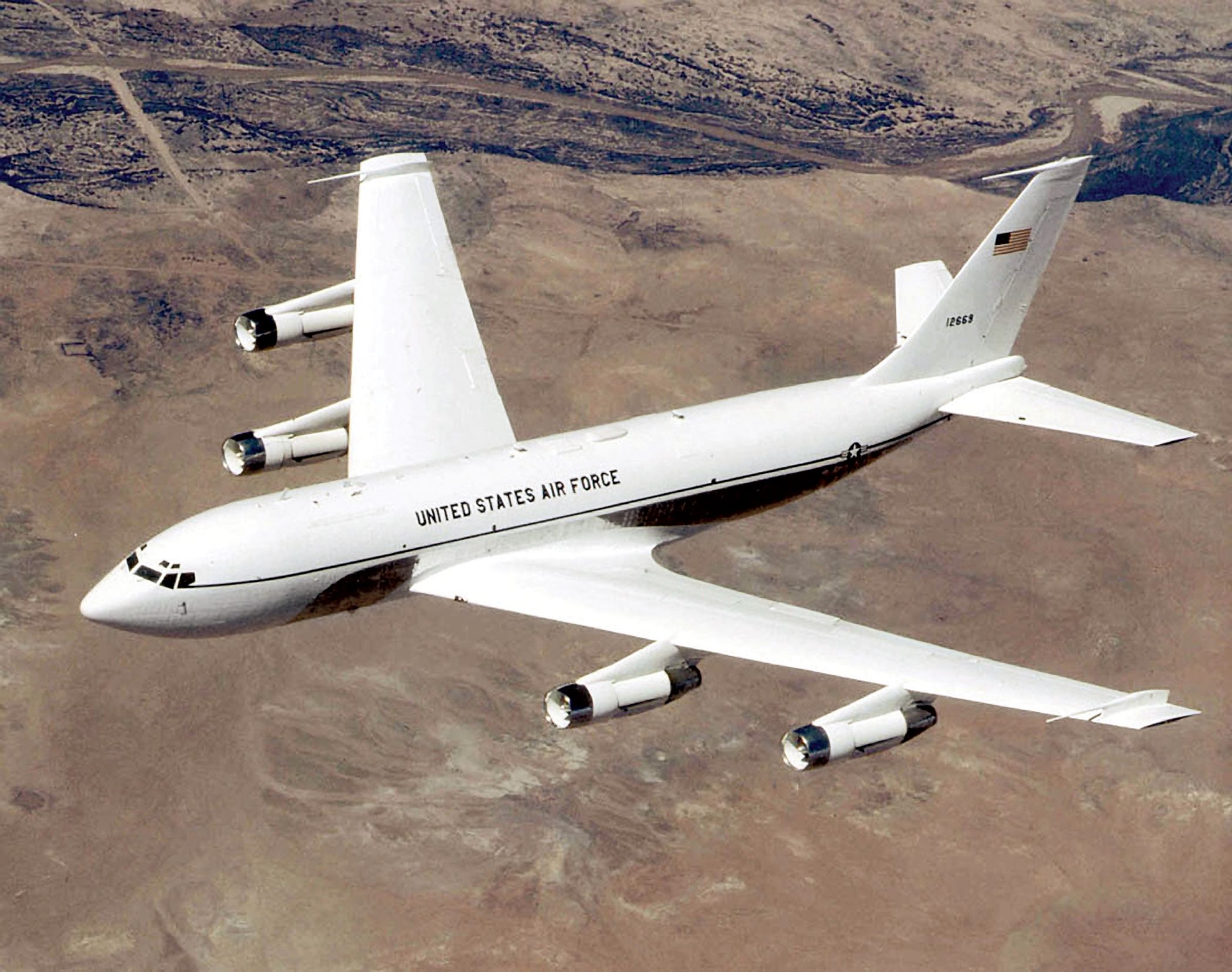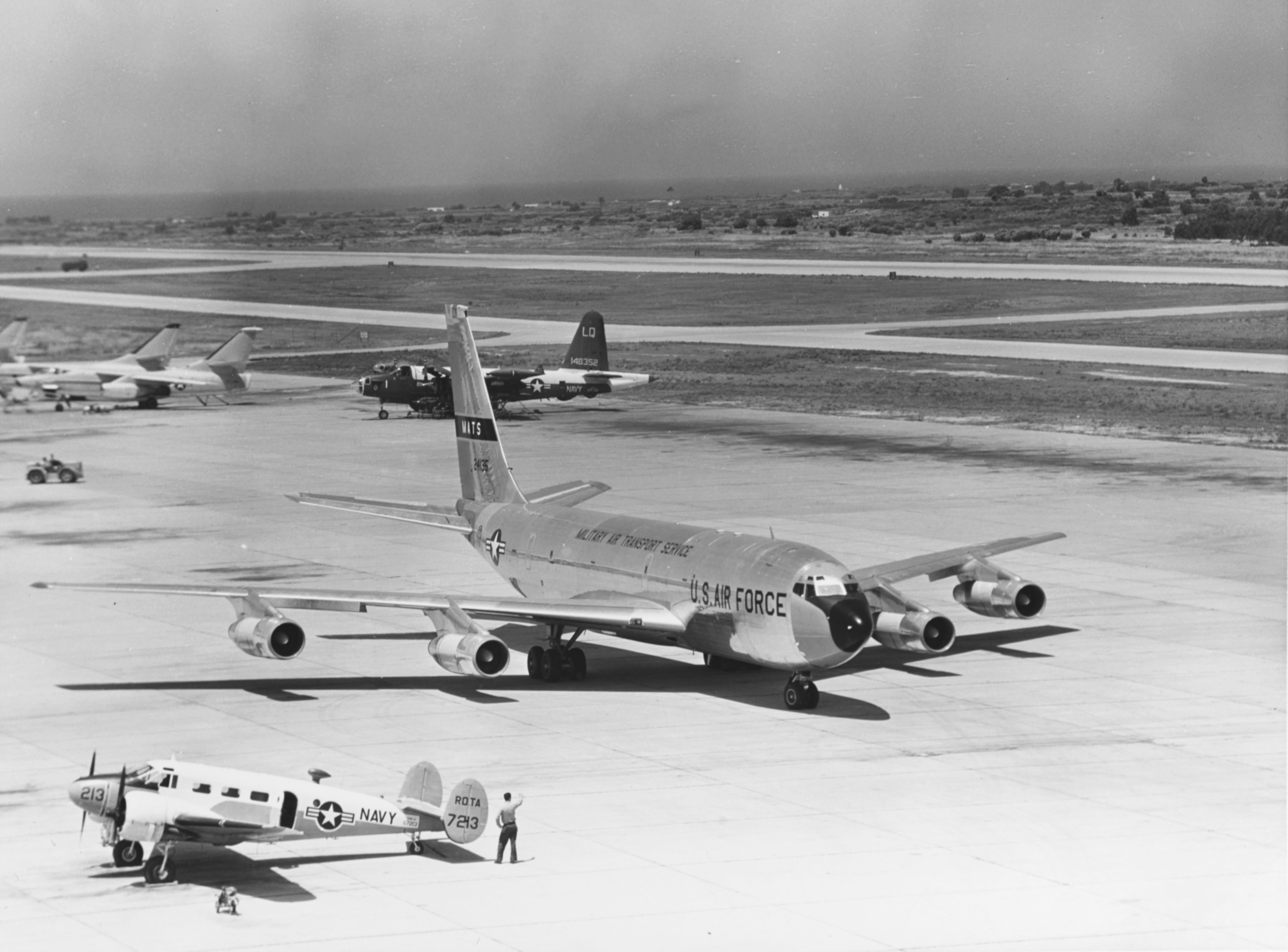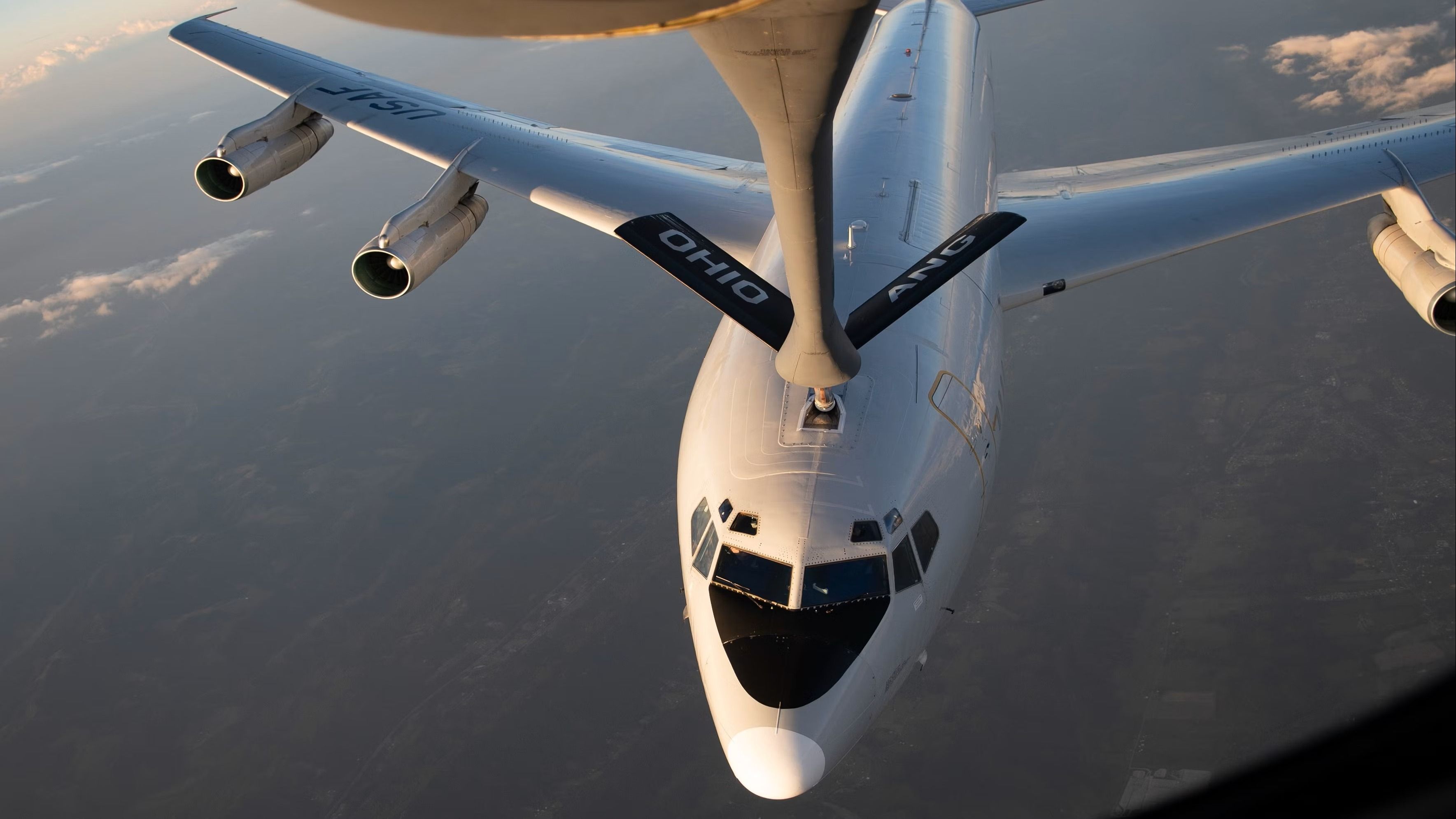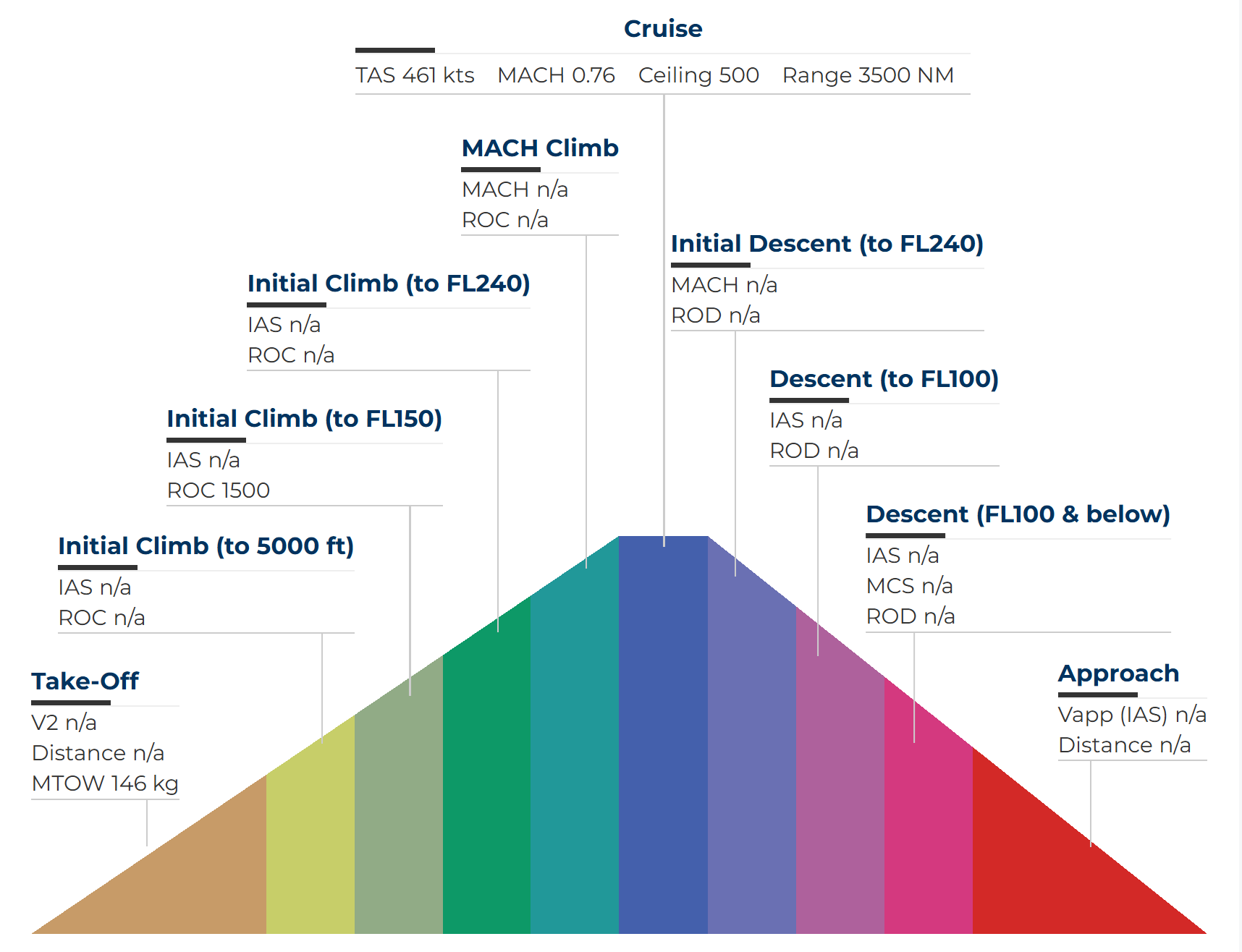Summary
- Boeing’s gamble for a jet-powered refueling tanker paid off with 50 C-135 planes ordered by Congress in 1960.
- The C-135 Stratolifter was a temporary measure for the Air Force until specialist cargo transports were developed.
- Limited by range and inflight refueling capabilities, the C-135 transport was versatile but had downsides.
The Boeing C-135 Stratolifter is a military transport aircraft designed and developed by Boeing in the early 1950s. Developed from the Boeing 367-80, the United States Air Force (USAF) aircraft performed its first flight in June 1961 and entered service in August. The C-135 Stratolifter also inspired the Boeing 707.
When Boeing began to consider building a narrowbody jet airliner in the early 1950s, it gambled that the American Air Force would order a jet-powered aerial refueling tanker with them. At the time, the military’s aerial refueling and cargo aircraft were propeller-driven planes like the piston-powered Douglas C-124 Globemaster II and C-133 Cargomaster turboprop. While both aircraft could carry large payloads, they quickly became obsolete as we approached the jet age.
Congress approved 50 C-135 for the Air Force
Boeing’s gamble paid off in May 1960 when Congress ordered 50 C-135 planes. As a derivative of the C-135 tanker, which was already in production, the government knew that making cargo transport from the tanker would save money.
Despite placing an order for 50 planes, the C-135 was meant to be a temporary measure while specialized cargo transports like the Lockheed C-141 Starlifter were being developed. According to Tinker Air Force Base,
“From reconnaissance to airlift to the U.S. Strategic Air Command’s flying command post, the C-135 has the versatility needed for an ever-adapting Air Force. The C-135 Stratolifter was the first strategic jet transport purchased by the Air Force as a long-range cargo aircraft. The first C-135 was delivered to the Military Air Transport Service in 1961, five years after the KC-135 Stratotanker made its first flight for the Air Force and two years after Tinker’s work force began its support of the -135 fleet.
Like many things, when short-term necessity forces you to cut corners, the C-135 transport had some downsides. Firstly, the aircraft’s floor was ten feet off the ground, meaning ground handling equipment was needed for loading and unloading. It also had a side-loading cargo door, limiting the size of what could be loaded onto the plane.
The plane’s range was also restrictive as it could only fly 6,000 miles and had no inflight refueling capabilities. This meant that the aircraft could not operate from the lower 48 states to some of the American military bases on the Pacific Rim. In addition, it required long runways for taking off and landing, which restricted where the plane could operate.
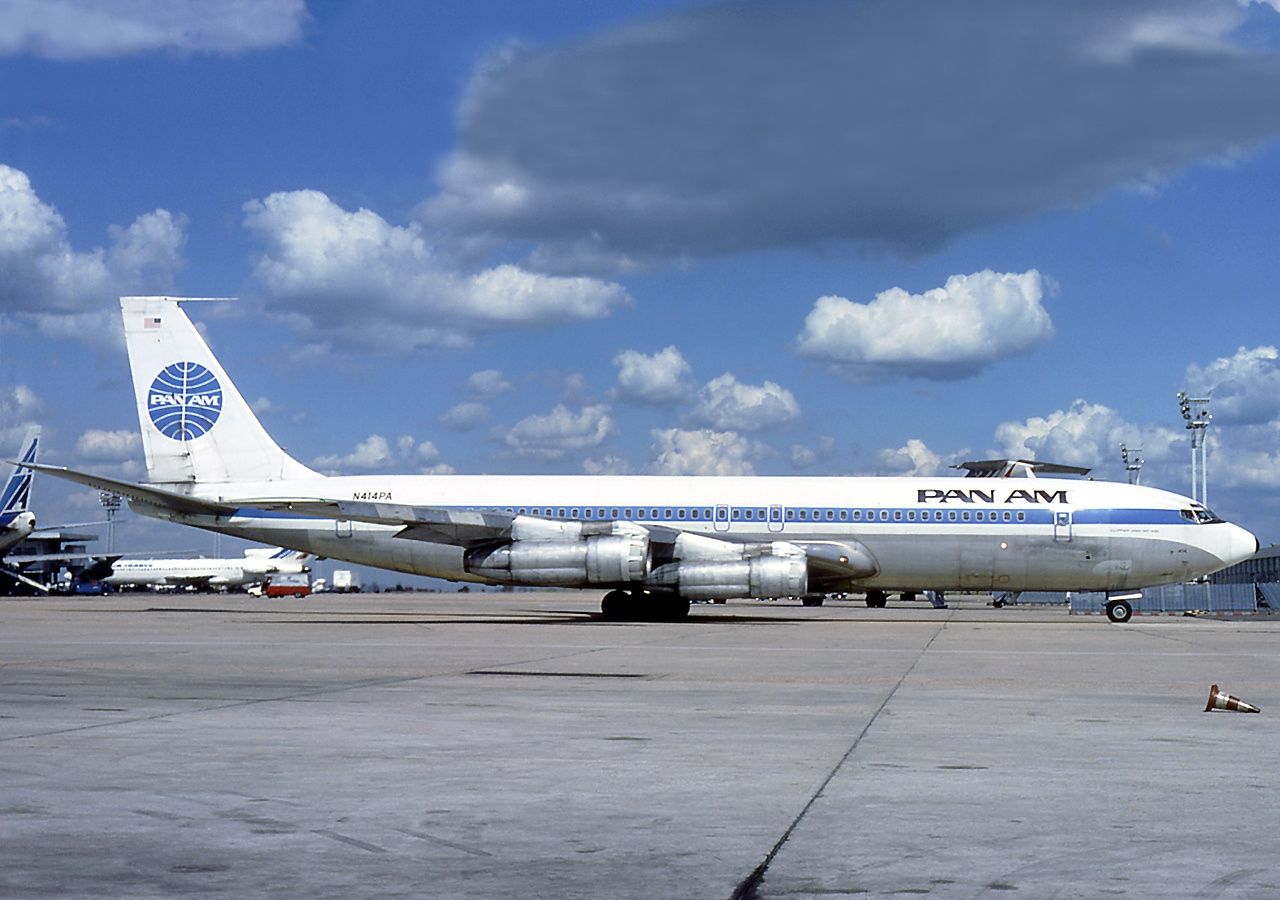
Related
Not Heathrow: The Pan Am 707 That Mistakenly Landed At RAF Northolt
The crew only realized their mistake after landing at the wrong aerodrome.
The C-135 Stratolifter
60 Stratolifters were built
- Crew: 3: pilot, copilot, loadmaster (4 for non-PACER CRAG aircraft)
- Length: 136 ft 3 in (41.53 m)
- Wingspan: 130 ft 10 in (39.88 m)
- Height: 41 ft 8 in (12.70 m)
- Wing area: 2,433 sq ft (226 m2)
- Empty weight: 98,466 lb (44,663 kg), empty operating weight 124,000 lb (56,200 kg)
- Gross weight: 297,000 lb (135,000 kg)
- Max takeoff weight: 322,500 lb (146,000 kg)
- Powerplant: 4x Pratt & Whitney TF-33-PW-102 low-bypass turbofan engines
- Thrust per engine: 18,000 lbf (80 kN) thrust each
When the Lockheed C-141 entered service with the Air Force in 1965, the cargo versions of the C-135 were modified for use as reconnaissance aircraft and staff/VIP transport. Of the 820 airframes built, most were KC-135A Stratotankers equipped to provide mid-air refueling.
The aircraft’s four turbofan engines, mounted under the aircraft’s mighty 35-degree swept wings, provided approximately 72,000 pounds-force of takeoff thrust, enabling the 322,500 lbs aircraft to lift off the ground. The cargo deck above the refueling system can carry a mixed load of passengers, cargo, and other equipment.
- Total aircraft built: 820
- Stratolifters C-135s: 60
- Series C-135Bs: 15
- Air tankers KC-135s: 745
Four turbofans, mounted under 35-degree swept wings, power the KC-135 to takeoffs at gross weights of up to 322,500 pounds. A cargo deck above the refueling system can hold a mixed load of passengers and cargo. Depending on the fuel storage, mission requirements, and flight conditions, the KC-135 can carry up to 83,000 pounds of cargo.
In total, during a production run from 1960 until 1963, 60 Boeing C-135 Stratolifters were built and comprised of the following variations:
- 18 C-135As, of which most were later converted to become Ariel command centers and VIP transports.
- 27 C-135Bs were built, of which ten were modified for weather reconnaissance.
- 3 C-135Cs originally built for weather reconnaissance were modified for transport use.
- 12 C-135Fs were built for the French Air Force to be used as multirole tanker/cargo and troop carriers
Photo: USAF
Performance parameters
- Maximum speed: 580 mph
- Range: 3,450 miles
- Service ceiling: 50,000 feet
- Rate of climb: 4,900 feet per minute
Image: Boeing
The decades-old airframe takes part in essential transport and aerial refueling missing with the USAF. According to the Air Force,
“The KC-135 Stratotanker provides the core aerial refueling capability for the United States Air Force and has excelled in this role for more than 60 years. This unique asset enhances the Air Force’s capability to accomplish its primary mission of global reach. It also provides aerial refueling support to Air Force, Navy, Marine Corps and allied nation aircraft. The KC-135 is also capable of transporting litter and ambulatory patients using patient support pallets during aeromedical evacuations.”
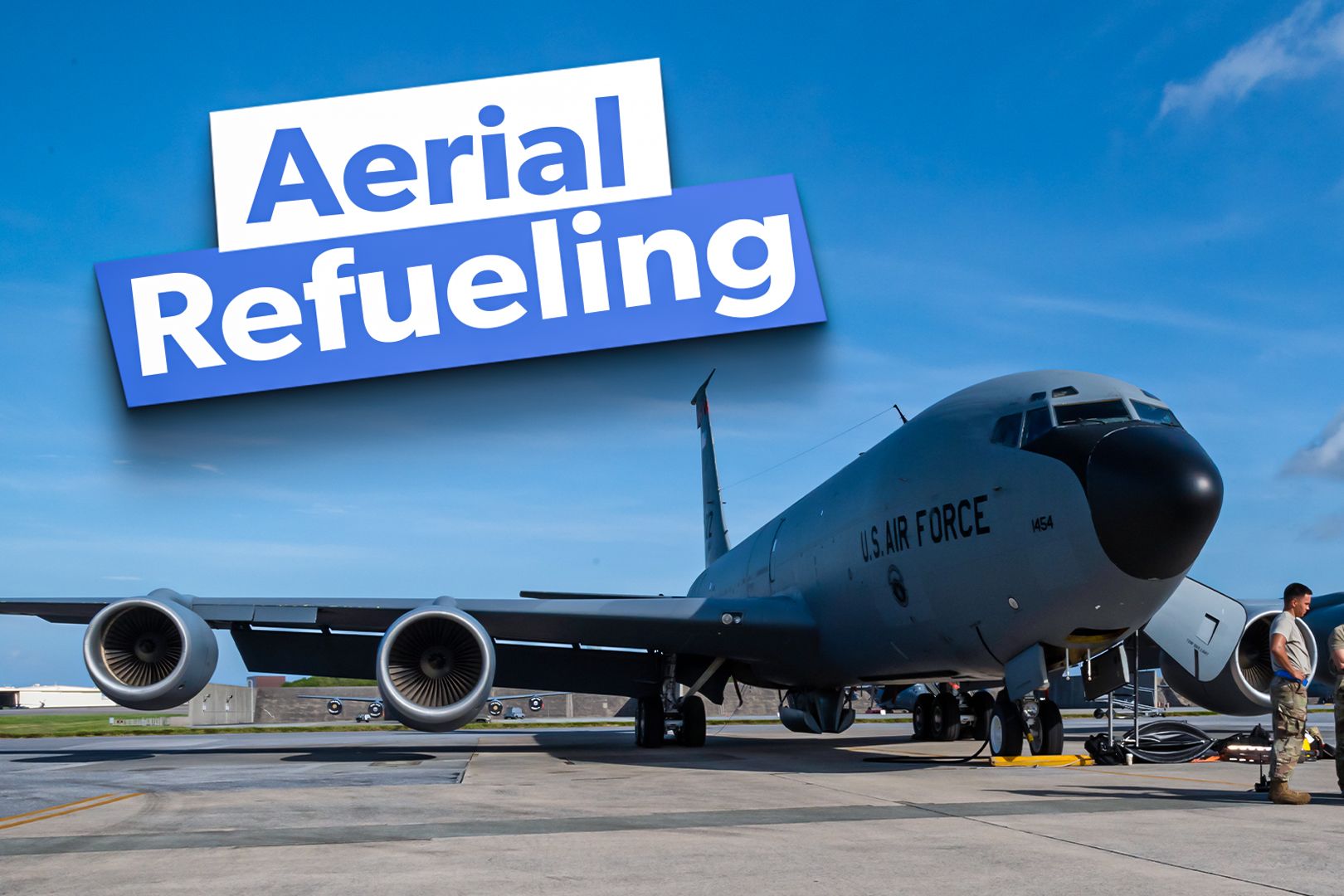
Related
Aerial Refueling: Examining The Top 5 Tanker Aircraft
Some of these tankers have been supporting combat forces for decades.


